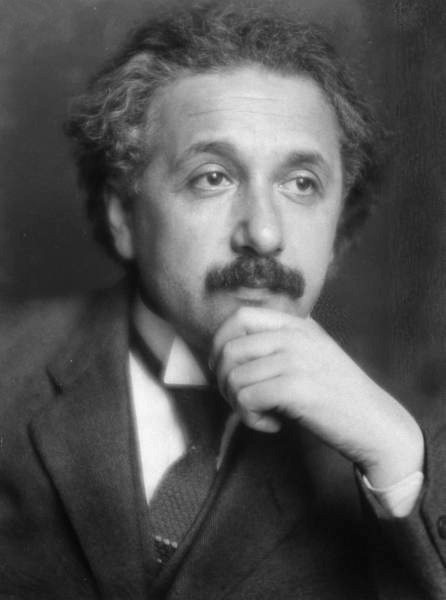A century of General Relativity
 This month, November 2015, marks the 100th anniversary of the publication of the equations of General Relativity, the theory devised by Albert Einstein to describe gravity. General Relativity allows to explain how apples fall from the trees as well as how the Moon moves around the Earth, just as Newton's gravitation did. However, General Relativity reaches far beyond, and it has triggered a radical change in our understanding of the universe.
This month, November 2015, marks the 100th anniversary of the publication of the equations of General Relativity, the theory devised by Albert Einstein to describe gravity. General Relativity allows to explain how apples fall from the trees as well as how the Moon moves around the Earth, just as Newton's gravitation did. However, General Relativity reaches far beyond, and it has triggered a radical change in our understanding of the universe.
The theory showed up with several important predictions that were shortly verified. First, it allowed to justify in an elegant way certain anomalies that had been observed in the orbital motion of Mercury. Secondly, it predicted that light should feel the effects of gravity too, and so the rays coming from distant stars should bend when passing through the vicinity of the Sun. The observational verification of such effects soon transformed Einstein into a renowned man not only among scientists, but also to the general public.
However, General Relativity also brought forth some implications of much deeper reach. On interpreting gravity as a geometric phenomenon it hints that the Universe, which ultimately is a large piece of evolving space-time, may be described as a whole by using the mathematically well-defined objects provided by the theory. To explore this idea we have gathered information about the distribution of galaxies at very large scales and the electromagnetic radiation that pervades outer space, and these data have led us to deduce that our universe lived a violent birth, the Big Bang, some 13.8 billion years ago. Besides, the theory helps us to understand how stars and galaxies formed, and also all the larger structures we observe in the cosmos, and it yields additional information about these structures: to be consistent with the observations General Relativity requires that the universe is filled with large quantities of unseen matter and energy whose nature, as of today, remains unknown. We call them dark matter and dark energy, and the prediction of their existence boosts a whole new family of complex experiments which aim at probing their properties. IFIC actively participates in these searches, for instance through the experiments that look for the elusive particles that comprise dark matter.
The existence of black holes is another significant prediction of General Relativity. Although these solutions of the theory were not considered seriously until the 1960s, the discovery of very compact object such as neutron stars forced to reassess the possibility that they indeed corresponded to certain physical objects. Today it is inevitable to admit that they are present in the central regions of many galaxies and as binary companions to some observed stars. From a different point of view, the implications of the existence of black holes for quantum theory are so puzzling that they have boosted research into the quantum theory of gravity, including string theory and loop quantum gravity. All of them use black hole physics as a benchmark standard to evaluate self-consistency. Maybe the detection of the elusive gravitational waves, the only carriers of some fundamental pieces of information about the early universe and about its most violent phenomena, will open up new windows to the cosmos and will provide answers to some of the questions we still face today.
Much of the most brilliant physics of the 21st century stems and feeds from the flame ignited by the hand of Einstein exactly one hundred years ago. Though the theory is being extensively probed by novel and ever-better expermental techniques it continues to stand high and just as valid and convincing as the first day. General Relativity, like few other physical theories, proves that intuition combined with thorough hard work can trigger a revolution whose echoes still reverberate one century afterwards.
The original papers by Einstein can be found online on the site of the project The Collected Papers of Albert Einstein, both in their original German version and translated into English:
"The Field Equations of Gravitation", A. Einstein. Preussische Akademie der Wissenschaften, Sitzungsberichte,1915 (2. Teil), 844–847
"Explanation of the Perihelion Motion of Mercury from the General Theory of Relativity", A. Einstein. Preussische Akademie der Wissenschaften, Sitzungsberichte,1915 (2. Teil), 831–839
















